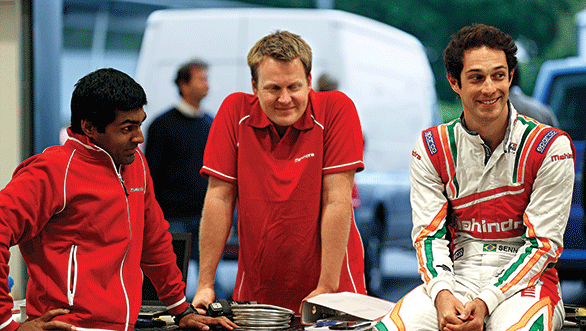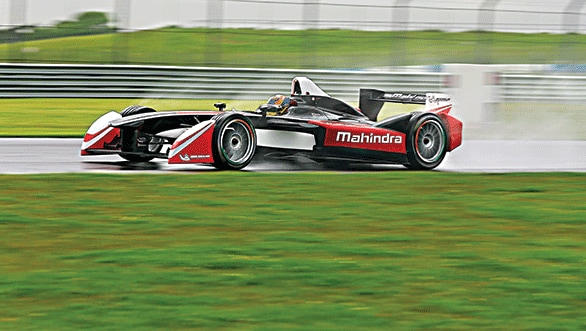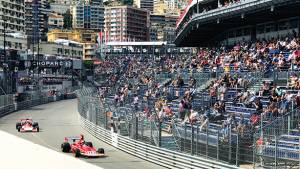Here's why Formula E is important
It's been a really busy few weeks for me with plenty of flying around. I had the European Le Mans Series race at Imola followed by F1 TV duties at Qatar, the launch of the Mahindra Racing Formula E driver line up, the official prologue test for the Le Mans 24 hour race and the first shakedown run in the Formula E car. I write this sitting in my camper van in the Le Mans paddock with just a few days to go for the biggest race in the world.
There's been a lot of interest in the new Formula E series, both from people within motorsport and from outside. Everyone's been really intrigued about whether it's going to take off or not, how the cars will sound, what speeds will they do, how the circuits will be and who will be driving them? The people involved in the series are serious players who know what they're doing. The FIA has given the series it's full backing and with 10 teams all signed up, workshops and first cars delivered on time and a first test with 10 cars on track, it's so far so good.
The Formula E series as a whole are very clear that they are not going to be compared to GP2 or Formula 3 or anything else. They are not a feeder series to F1, nor do they want to be. It's a totally different way of going motor racing and their target audiences are not F1 or sportscar fans, but more technology loving people who will look at it as a cool new way of going motoring and racing. The reality is that the whole automotive world is changing and hybrid and electric car programs are now being done by every single big manufacturer on the planet. Therefore the timing of the Formula E series is very good.
 Former GP2 and F1 team-mates Karun Chandhok and Bruno Senna now join forces once again to pilot Mahindra Racing to their Formula E goals
Former GP2 and F1 team-mates Karun Chandhok and Bruno Senna now join forces once again to pilot Mahindra Racing to their Formula E goals
Beyond this, governments, sponsors and the public are all looking at eco-friendly green programs more favourably and once again this makes it very appealing for the cities to host the race events. Running on city streets rather than on race circuits an hour or two outside major cities means that the racing is being taken to the people rather than the people needing to go to the races. For someone to just take a cycle or a metro to the event rather than deal with traffic jams and parking hassles on top of the commute will make it very appealing, hopefully.
I'm very excited to be at Mahindra Racing this year. People within India obviously know how big Mahindra are, but outside India, I have no doubt that Formula E will go a long way to help build up the brand globally. Mahindra are a serious engineering company and what a lot of people don't realise is that the Formula E program is very much an engineering exercise and not just a marketing one. The group's electric car company Mahindra Reva are very actively involved with our race team, with data, information and ideas constantly flowing back and forth between Bangalore and the Donington Park HQ. In due course, when the rules permit, Mahindra will become a manufacturer team with batteries, motors and gearboxes built in India coming onto the race car. This will be the first genuine Indian car racing team, led by Indians, built by Indians and driven by Indians.

The attraction to Formula E for me was three fold first, I wanted to learn about the world of electric powertrains. If you look at Sportscar or F1 racing, everyone has an electric or hybrid powertrain now so I thought if I can learn how to develop a system from the ground up with a new team, that would really help me grow as a driver. Second, the challenge of doing street races is something I've always loved so having 10 new street circuits to race at sounded like a fantastic challenge. And third, the opportunity to build a genuinely Indian team together with Mahindra as highlighted before was very appealing.
There are a lot of things different about driving an electric race car. First of all, you can't really hear anything but the wind noise when you're driving it so you lose one sense of reference from the driving experience. The torque from the motor is instant and so driveability is critical but on the flip side, gear choice isn't as important as it is in other cars.
The workload in the cockpit is going to be huge for the drivers with the races being won and lost depending on energy recovery. There are so many options with energy regeneration it's crazy regen when you lift off, regen when you brake or regen when you apply negative torque to the motor. While sportscars and F1 have live telemetry and electronic brake balance control, we're going to be working it all out ourselves on track with multiple maps and options to choose from. On short, twisty circuits, the torque will make the cars good to watch as they will twitch around a lot and with huge options in terms of strategy for power re-charging and useage, we are going to see some great racing even on the narrow confines of a street track. Bring on Beijing in September!.














